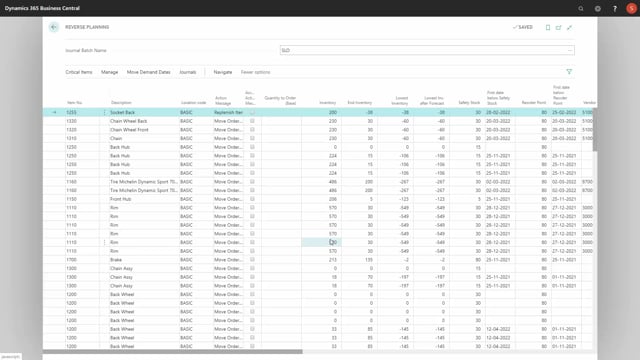
When you use the function to calculate moving demand dates, it actually calculates up through the hierarchy, bottom up, and it includes all demands.
So, if I’m running it now, it will calculate on the lowest low-level code first, then a low-level code higher, etc.
And this will suggest moving all the orders.
Now it actually includes all the depending demands, except that it’s reversed, of course, because it’s a Reverse Planning.
So, it starts on the lowest item saying we need to move this socket back, then we need to move those chain wheel back, and we need to move four different orders from the back hop, which has effect on the other lines further down.
So, it’s possible because the orders actually exist in the system.
We do have the purchase orders, transfer orders, assembly orders, sales orders.
So, it’s possible to do this calculation, whereas when we calculated critical items, it don’t break down hierarchy.
You need a planning worksheet for that.
And that’s because the breaking down hierarchy on nonexisting orders would have to suggest when to place an order, and that is exactly what the critical item doesn’t do.
But moving demand dates should be like a complete reverse MRP, planning to, or figuring out which demands to move.

